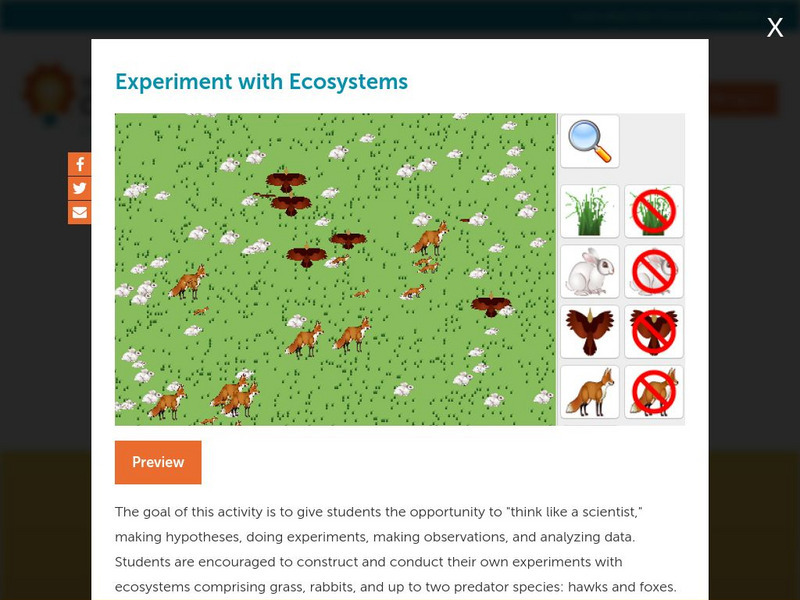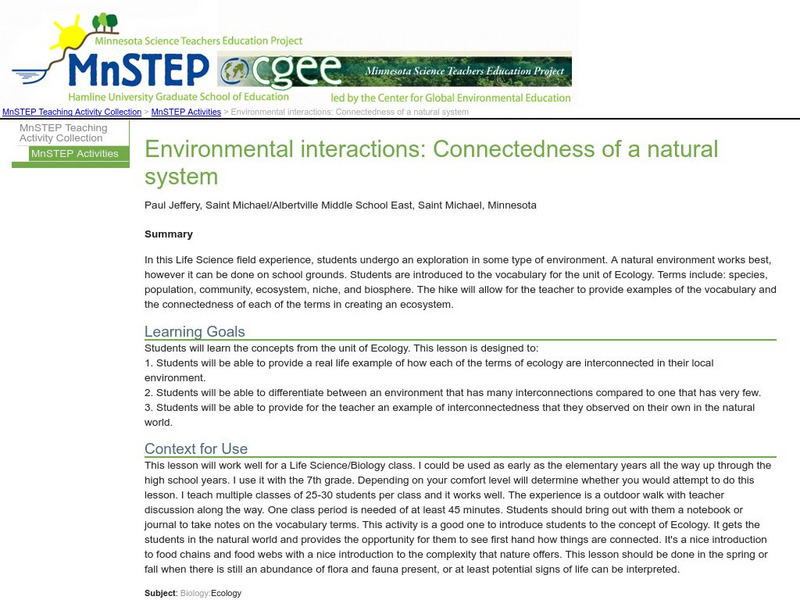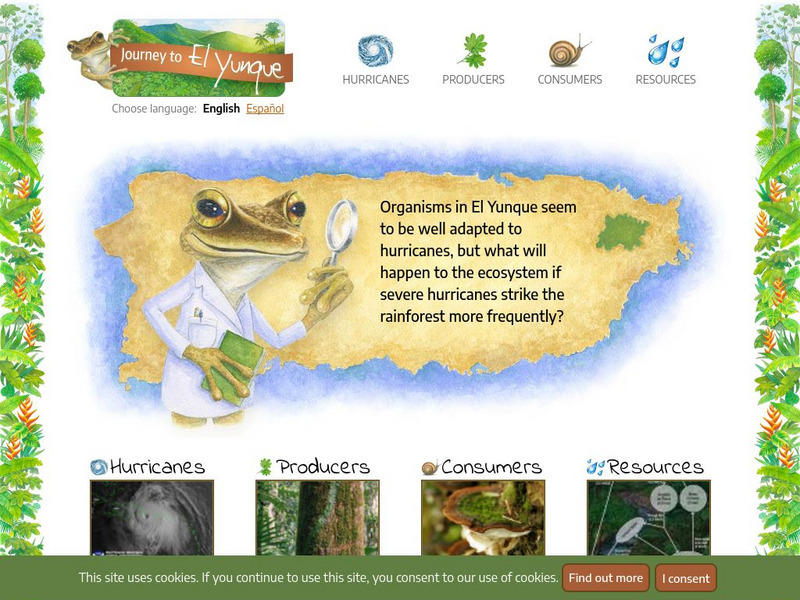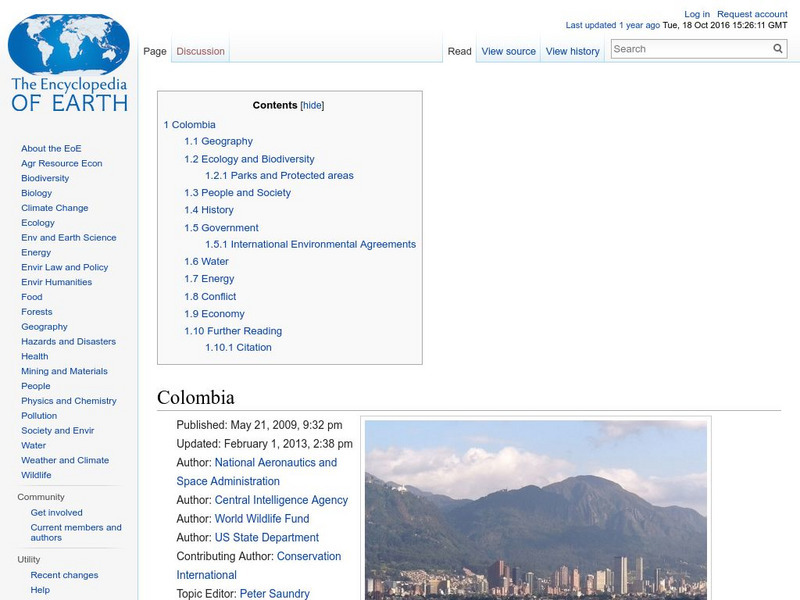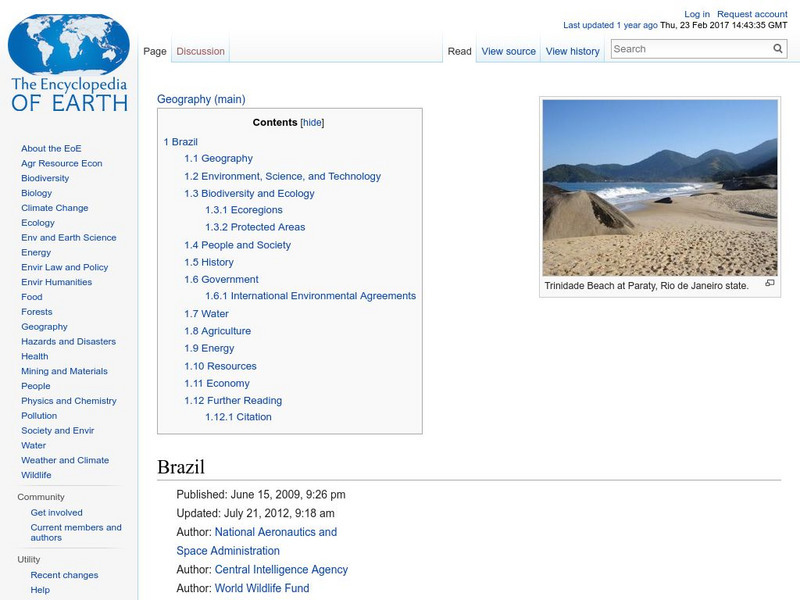Earth Life
Earth Life: Millipede Ecology
General information on the ecology of the diplopda, millipedes.
TeachEngineering
Teach Engineering: Computer Simulation of the Sonoran Desert Community
The computer program's simulation of a Sonoran desert community should ultimately strengthen the student's comprehension of what is required for a natural ecosystem to sustain itself (remain in balance). This computer simulation program...
BBC
Bbc News: Disposable Planet
The Earth's population is soaring, but its resources are finite. Can we provide food, water, energy? Watch a slideshow on our planet's future, and take a quiz to measure your impact on the Earth.
Concord Consortium
Concord Consortium: Stem Resources: Experiment With Ecosystems
Learn what happens to different populations of organisms as their ecosystem changes. Design your own experiment and make your own guesses with what the result will be with this virtual ecosystem. Also experiment with producer/consumer...
Oswego City School District
Regents Prep: Ecosystems/communities
Abiotic factors vary in the environment and determining the types and numbers of organisms that exist in that environment. Factors which determine the types and numbers of organisms of a species in an ecosystem are called limiting...
Cosmo Learning
Cosmo Learning: Principles of Evolution, Ecology and Behavior
A collection of video lectures introducing beginning biology students to the principles of evolution, ecology, and behavior. The course was taught three times a week for a semester at Yale University. The course discusses concepts of...
Other
Ecology: The Industrial Revolution
A discussion of the effects of the Industrial Revolution on population growth, with emphasis on the question of sustainability. A great introduction to the field of ecology.
University of California
Ucmp: Nematoda Roundworms
General info from the University of California on the the physical characteristics and population ecology of roundworms.
Annenberg Foundation
Annenberg Learner: Ecology Lab
Build your own ecosystem, and explore the effects of these interrelationships.
Science Education Resource Center at Carleton College
Serc: Environmental Interactions: Connectedness of a Natural System
A field experience where students undergo an exploration in a natural environment. They are introduced to the concepts of species, population, community, ecosystem, niche, and biosphere.
ClassFlow
Class Flow: Populations & Communities
[Free Registration/Login Required] This flipchart features the levels of ecological organization. Students can move objects to reveal decryptions and answers! An Activote quiz accompanies this flipchart, but may have to be downloaded and...
Other
Explore Learning: Estimating Population Size
Adjust the number of fish in a lake to be tagged and the number of fish to be recaptured. Use the number of tagged fish in the catch to estimate the number of fish in the lake. (Free usage is limited to five minutes per day.)
Geographypods
Geographypods: Patterns and Change: Patterns in Resource Consumption
This collection of three learning modules looks at issues related to resource consumption. It examines theories about how population size affects consumption, the changing patterns of energy consumption, and ways to minimize consumption....
NOAA
Noaa: Recent Polar Bear Happenings
Scott Schliebe gives an in-depth look at polar bears and what may be the cause of their changing population over the past 30 years.
Other
The Learning Partnership: Journey to El Yunque
In this set of learning modules, students examine the impact of hurricane weather on the El Yunque rainforest in Puerto Rico. They learn about hurricanes, producers, consumers, and the food chain, and how disruptions in organisms'...
Texas Education Agency
Texas Gateway: Homeostasis Succession
Given scenarios, illustrations, or descriptions, the student will identify the process of ecological succession and the impact that succession has on populations and species diversity.
Sophia Learning
Sophia: Limiting Factor: Lesson 3
This lesson will explain how a limiting factor effects the size of a population. It is 3 of 4 in the series titled "Limiting Factor."
Environmental Education for Kids
Eek!: Teacher Resources: My Ton of Trash (Lesson Plan)
Here you can find an engaging lesson plan on the trash each individual generates over time. Students will learn how trash is generated, how trash is disposed of, and possible ways to reduce the amount of trash.
Encyclopedia of Earth
Encyclopedia of Earth: Colombia
Facts about Colombia including environmental issues, background, geography, ecology and biodiversity, people, economy, natural resources, energy resources, and conflict.
Encyclopedia of Earth
Encyclopedia of Earth: Brazil
Facts about Brazil including environmental issues, background, geography, biodiversity and ecology, ecoregions, government, people, water, economy, energy, natural resources, industries, and conflict.
Other
Backyard Nature: Arthropods in General
A general overview of the physical characteristics of arthropods, including information about their important ecological role on the planet with their immense population.
Encyclopedia of Earth
Encyclopedia of Earth: Chile
Facts about Chile including environmental issues, geography, ecology and biodiversity, people, energy resources, natural resources, economy, and conflict.
Concord Consortium
Concord Consortium: Evolution: Variations and Adaptations
Students discover that variation in plants allows some varieties to survive in near-drought conditions. Next, students learn that different types of rabbits prefer to eat different varieties of plants. Students make the connection...
Other
My Science Box: Ecosystem Organization
In this lesson, students will learn about the different levels in the hierarchy of ecology and explain the relationships: organism, population, community, ecosystem, biome, and biosphere. They will also discover why different regions...
Other popular searches
- Human Population Ecology
- Population Ecology Lab
- Community Ecology Population
- Biology Population Ecology
- Plant Population Ecology
- Population Ecology Plants
- Population Ecology Webquest
- Population Ecology Bacteria
- Population Ecology Web Quest
- Uk Population Ecology
- Population Ecology Graphing
- Census Population Ecology





